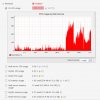The WWW service monitors the health of worker processes by periodically pinging them to determine their responsiveness. If a worker process fails to respond to a ping (for example, the worker process might not have available threads to process the incoming request), the WWW service either terminates the worker process and creates another worker process to replace it, or releases the worker process but lets it continue to run. You can configure IIS to perform a specified action when an unhealthy worker process is released — for example, you can specify that IIS attach a debugger to a released worker process.
Additionally, the WWW service maintains a communication channel to each worker process and can detect a drop in the communication channel, which indicates a worker process failure. When a worker process fails of its own accord, the WWW service starts another worker process in its place, provided the application pool does not go into rapid-fail protection.




